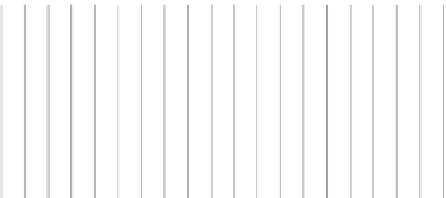Information Technology Reference
In-Depth Information
(a)
250
200
150
100
50
0
01234567891011121314151617181920
Trials
(b)
250
200
150
100
50
0
0
1
2
3
4
5
6
7
8
9 10 11 12 13 14 15 16 17 18 19 20
Trials
Fig. 5.13 Two learning curves with approximately the same final speed. a A relatively shallow
learning curve. b A relatively steep learning curve
Systems that allow users to recognize actions they want to do will be easier
initially to use than those that require users to recall commands. There is a trade-
off, however, when the novices become experts. The experts will be able to recall
the keystrokes or command names and will not wish to wade through the choices.
For example, Linux experts like to use keystrokes in the command shell, while
novices on Windows prefer a graphical user interface.
Systems that encourage users to reflect on how to perform the task may lead to
different types of learning. Where the learning is incidental and not tied to edu-
cational intent or systems, this may not matter. On the other hand, tutoring systems
should be careful that what users learn is what is intended. For example, the
interface should not encourage users to just try key presses or button clicks to see
what happens, which can lead to implicit learning that is tied to the representation
of the interface and not to the domain.
Learning in such a situation has been seen in solving the 8-puzzle. Figure
5.2
shows such a puzzle. When users could directly click on the interface to indicate the
tile to move, they took a larger number of moves and could verbalize their
knowledge less well than users that had to work harder to interact with the interface,
such as clicking on the tile and the direction to move, or using a speech interface.






















































































Search WWH ::

Custom Search